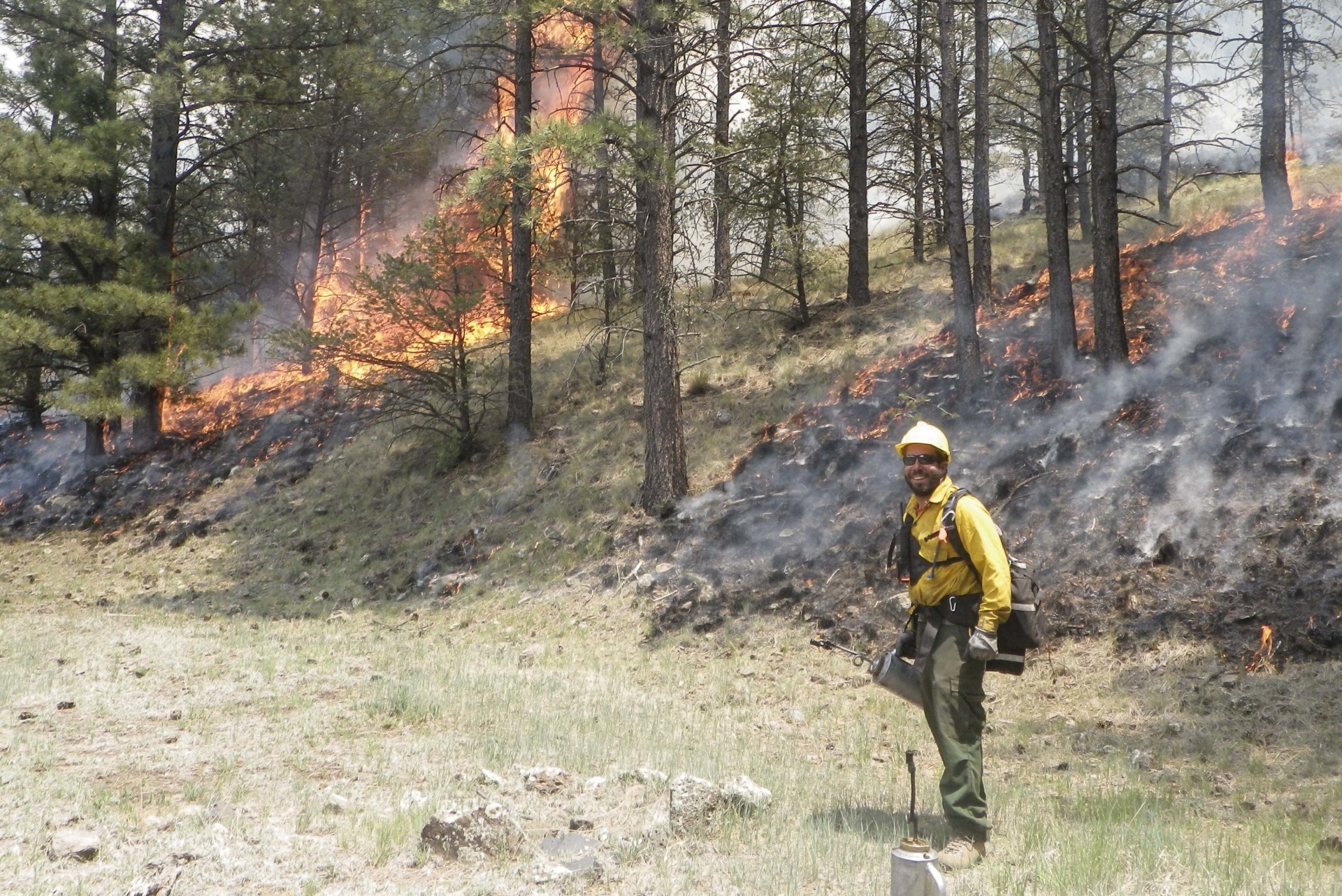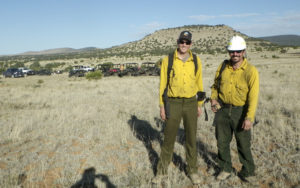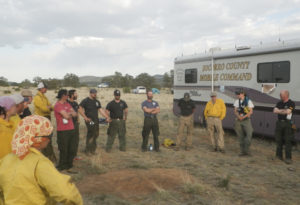
Wildfires are by nature unpredictable and fierce. The science of wildfire behavior and management, as studied at Colorado State University, has evolved into a team effort that seeks to limit the damage caused by extreme fires by planning ahead.
CSU students recently participated in a national program called Prescribed Fire Training Exchanges, or TREX. Created in 2008 by the Nature Conservancy Fire Learning Network, TREX provides interdisciplinary training to a diverse work force of fire and natural resource professionals. The program encourages cross-pollination between students and professionals in academic settings, natural resource managers, and fire management specialists to better integrate fire education, training, and experience within local communities.
One approach of this ongoing interdisciplinary effort to better battle fires has been to create prescribed fires, planned events that can be effective in helping to manage and prevent extreme wildfires, that also assist with natural resource management objectives. These burns can also provide a comparable testing ground that facilitates research in action.
Seeing fire in a new light
Mike Caggiano, Jared Scott and Scott Ritter, doctoral students studying wildfire science in the CSU Department of Forest and Rangeland Stewardship, recently joined 35 other volunteers to experience fire on its own terrain. They were part of a TREX-sponsored two-week prescribed burn in the remote Luera mountains of south central New Mexico. Strangely enough, Mother Nature cooperated by providing a wet beginning that moderated conditions and let fire’s softer side shine through.
The Luera Mountain prescribed fire was part of the Prescribed Fire Training Exchanges (TREX) program and was supported by the UDSA Forest Service’s Collaborative Forest Restoration Program. Other sponsors include The Fire Learning Network, The Nature Conservancy, New Mexico Prescribed Fire Council, New Mexico State Forestry, New Mexico State Land Office, South Central Mountain RC&D Council, Forest Stewards Guild, and Southwest Fire Science Consortium.
If you have questions or an interest in participating in a Prescribed Fire Training Exchange, contact Michael.Caggiano@colostate.edu.
In his research, Scott uses computers to create idealized landscapes and model wildfire behavior at the landscape scale. One factor he studies is how crown fires spread from treetop to treetop, but during the Luera fire he saw a different phenomenon: When the wet landscape conditions dried up and crews ramped up burning, individual trees ignited but then just burned out without spreading to the rest of the canopy.
“It was interesting to watch a tree torch out without spreading to other trees,” Scott said. “Many firefighters on intense wildfires don’t get to see that.”

Over the duration of the burn, Caggiano, Scott and Ritter played active roles on ignition and holding crews as they immersed themselves in long days of extensive training. Along with the burn itself, the crews learned about local fire management techniques and strategies that can facilitate fire’s unique role in particular ecosystems.
Working next to active flames is hard physical work. Volunteers carried around 50 pounds of equipment on their backs, hands and feet daily. It was the first time Scott and Ritter had experienced the weight, heat, and ultimate concentration required during prescribed fire implementation.
“Flames take all the water out of you,” Scott, said, recalling how he drank a whole gallon of water during a single break. “I had no idea how hot it would get.” Even so, he said he would do it again in a heartbeat.
Prescribed fire benefits
Why was a prescribed burn done in the middle of fire season? Caggiano, who studies cooperative fire management, said in-season burns are sometimes needed to imitate the historical role natural fire has played on fire-adapted ecosystems. A prescribed burn design requires people to also make adaptive choices.
“Designing a prescribed burn can be difficult,” Caggiano said. “It requires a lot of coordination, and ultimately depends on the specific objectives, but generally the trick is to use the right fire, at the right place, at the right time.”
During preparations, burn specialists consider many factors such as temperature, humidity, wind, fuel types, and smoke dispersal conditions in their planning. When done effectively, prescribed fires can benefit natural resources, protect communities, and mitigate the risks of future fires.
The Luera TREX burn was designed to protect watershed, habitat, rural livelihoods, and ecosystem services. Diverse fuel types ranged from grass, pinyon juniper, ponderosa pine and north-facing mixed conifer forests. At the lower elevations, fire promotes the restoration of native vegetation and provided fresh grass cover for local grazing and cattle operations. At the higher elevations, low-intensity fire protects ponderosa pine forest systems from future high intensity fires that can occur under extreme conditions.
This prescribed fire was unique partially because of its remote location. The mountain range had maintained some resemblance to a natural, historical fire regime due to the difficult access. Some fire management had been done fairly recently, but the higher elevation forests hadn’t burned for 30 years and were overdue for natural fire.
Reducing future wildfire risk to this important landscape wasn’t the only benefit of this burn. It also built up the local capacity to plan and implement prescribed burns in New Mexico and helped build a regional workforce of trained fire practitioners who crossed state and professional boundaries to collaborate.
Cross-collaboration

While fire service organizations and the academic community traditionally view wildfire through two very different lenses, this training event provided an opportunity for these groups to engage and accomplish a common goal. With their own boots on the ground, CSU wildfire science students helped bridge this perceptual disparity. Caggiano, Scott and Ritter sweat right alongside researchers from other scientific disciplines and professional firefighters earning specialized qualifications. In all, this interagency TREX crew successfully reintroduced fire to 7,000 acres of diverse fire-adapted habitat.
“Seeing fire in its natural role helps put our coursework and research into context and provided a unique opportunity for professional development,” said Caggiano. “Working with fire managers helped us develop productive relationships with practitioners, and gave us insight on the connections between fire management and wildfire science that leads to meaningful research.”
Science can help predict fire behavior and guide management decisions, and after experiencing fire on its own terms, these students appreciated the tangible foundation that guides their work. “There’s definitely an art to it,” said Scott.